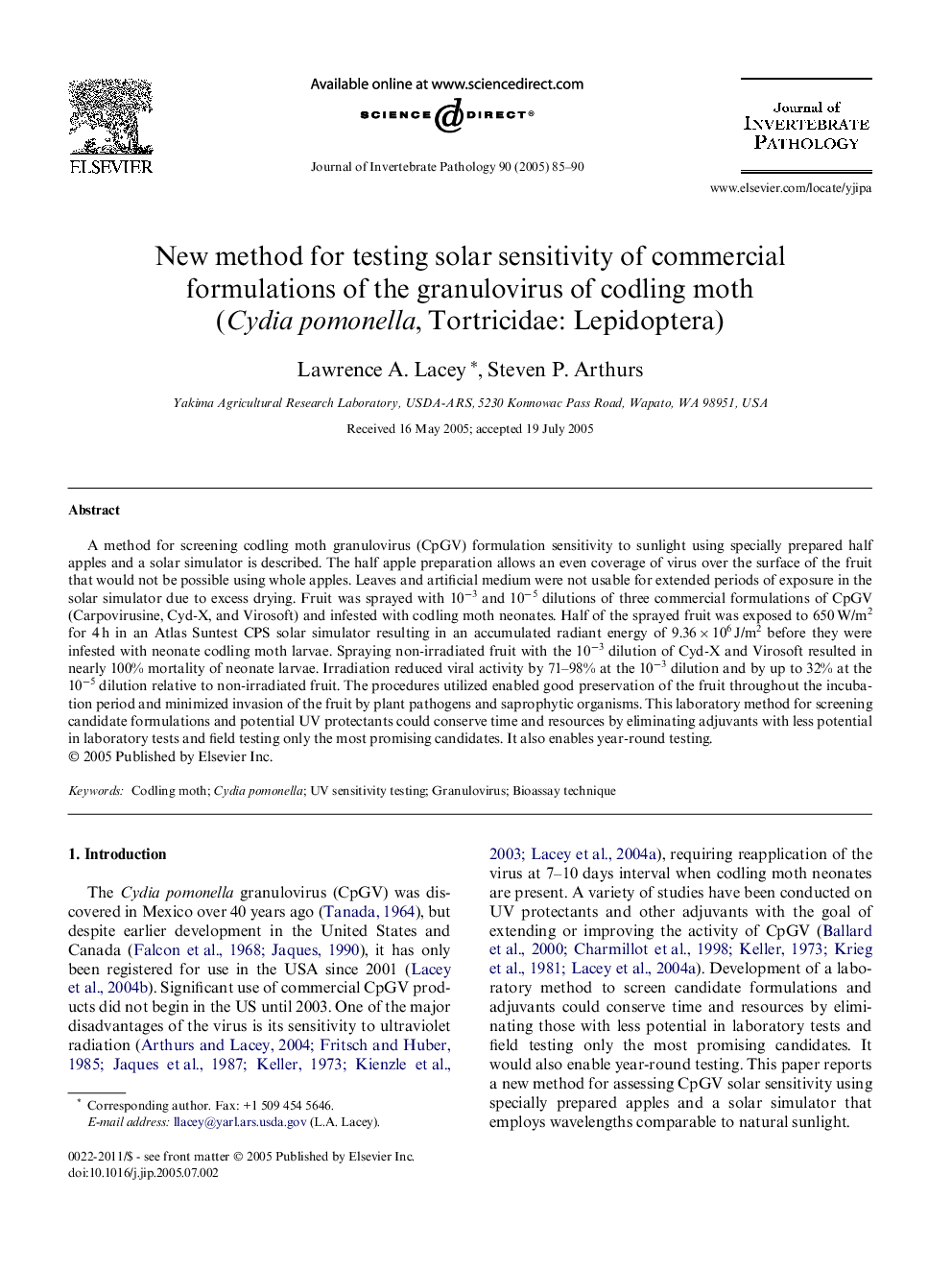| Article ID | Journal | Published Year | Pages | File Type |
|---|---|---|---|---|
| 9486340 | Journal of Invertebrate Pathology | 2005 | 6 Pages |
Abstract
A method for screening codling moth granulovirus (CpGV) formulation sensitivity to sunlight using specially prepared half apples and a solar simulator is described. The half apple preparation allows an even coverage of virus over the surface of the fruit that would not be possible using whole apples. Leaves and artificial medium were not usable for extended periods of exposure in the solar simulator due to excess drying. Fruit was sprayed with 10â3 and 10â5 dilutions of three commercial formulations of CpGV (Carpovirusine, Cyd-X, and Virosoft) and infested with codling moth neonates. Half of the sprayed fruit was exposed to 650Â W/m2 for 4Â h in an Atlas Suntest CPS solar simulator resulting in an accumulated radiant energy of 9.36Â ÃÂ 106Â J/m2 before they were infested with neonate codling moth larvae. Spraying non-irradiated fruit with the 10â3 dilution of Cyd-X and Virosoft resulted in nearly 100% mortality of neonate larvae. Irradiation reduced viral activity by 71-98% at the 10â3 dilution and by up to 32% at the 10â5 dilution relative to non-irradiated fruit. The procedures utilized enabled good preservation of the fruit throughout the incubation period and minimized invasion of the fruit by plant pathogens and saprophytic organisms. This laboratory method for screening candidate formulations and potential UV protectants could conserve time and resources by eliminating adjuvants with less potential in laboratory tests and field testing only the most promising candidates. It also enables year-round testing.
Related Topics
Life Sciences
Agricultural and Biological Sciences
Ecology, Evolution, Behavior and Systematics
Authors
Lawrence A. Lacey, Steven P. Arthurs,
